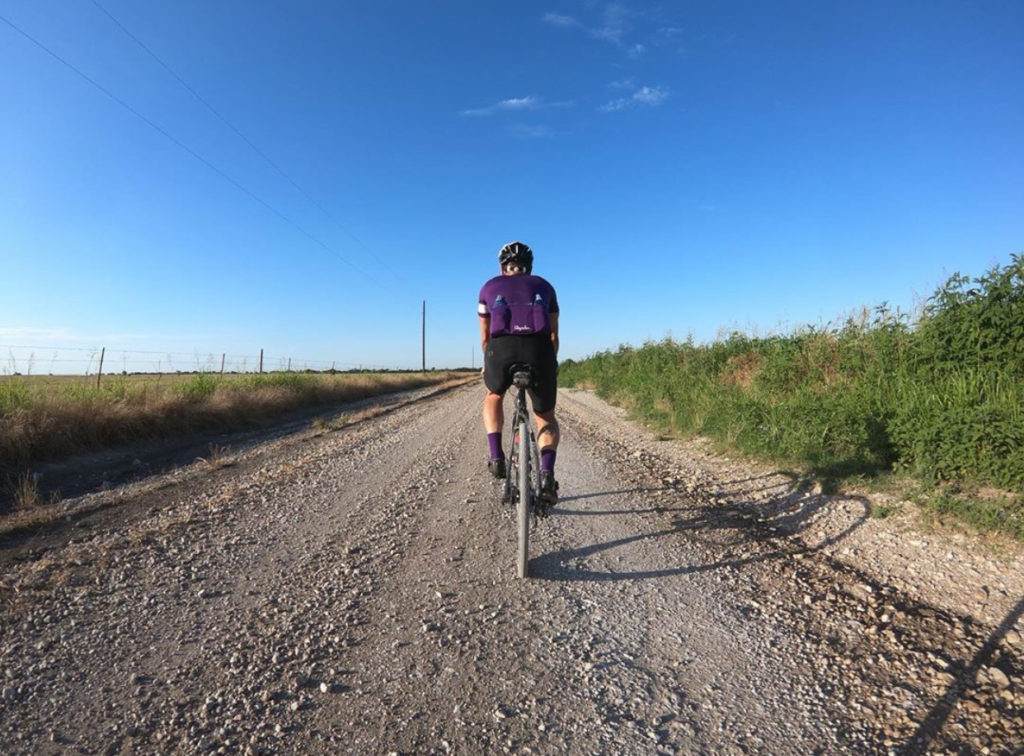Sponsored by
Five Tips For Picking A Gravel Bike

You’ve seen road bikes and mountain bikes, but you are now hearing about gravel bikes. You ask yourself: What is a gravel bike? Gravel bikes are essentially a road bike that has been designed to allow you to ride on just about any surface including off-road trails, gravel, and fire roads. They are also designed to help you carry some ‘luggage’ thus allowing you to be able to ride all day in a scaled down version of adventure cycling. So, are you ready to dive into one of cycling’s biggest trends? Before you run to your local cycling shop, here are five tips for picking a gravel bike.
Five Tips For Picking A Gravel Bike
1. Clincher vs Tubeless Tires
Tire choice is important when heading to the dirt. Clincher tires are well established and most familiar among cyclists; you have a tire that goes on the rim of your wheel with a small inner tube that inflates inside it. Tubeless, as its name suggests, is a tire that lacks an inner tube and instead has a small amount of sealant inside that creates a lock between the rim and the tire so air does not escape.
When riding gravel, pinch flats can be pretty common on clincher tires. Pinch flats happen when a sharp impact to the tire (like hitting a rock or washboard) causes the tire to compress so much that the tube pinches between the tire and the rim. Running a tubeless setup removes the risk of pinch flats. Not having to worry about pinch flatting allows you to run a much lower tire pressure, which results in a more comfortable ride and ease while rolling over rocks. In addition, the sealant inside the tire will fix most small punctures you may encounter from things like thorns as you ride.
2. Rim vs Disc Brakes
When it comes to bikes, there are two different style brakes you can choose between. Rim are the more traditional style brake that comes equipped on a bicycle, which provides stopping power by putting pressure on the rim of the wheel. Disc brakes attach to the center of the wheel and provide stopping power by putting pressure on a small disc. This options provides better stopping power and a more consistent braking surface, which makes them ideal in various weather conditions. The disc brake will be more reliable in wet muddy conditions, where rim brakes are likely to clog up with mud. Rim brakes are also limiting because most rim brake calipers max out at a 28 mm tire clearance, making it difficult to convert a road bike with rim brakes into a gravel bike with larger tires.
Disc brakes also come in two styles, mechanical and hydraulic. Mechanical brakes run a cable through the brake line to control the brake, while hydraulic brakes rely on brake fluid, similar to your car. Most entry level gravel bikes are equipped with mechanical brakes, which provide more stopping power than a hydraulic brake and require less maintenance.
3. Shock or No Shock
Several gravel bikes come equipped with some sort of small shock system. Having some sort of shock or suspension system, even if minimal, will allow the bike to absorb some impact from small bumps. This conserves energy and is less taxing on your body, ultimately resulting in a more comfortable ride.
Individual brands all have their offering of a gravel bike and they include various shock options. A few of the larger brands and their contribution to the market are: the unique Lauf Grit fork, which offers 30 mm of travel, Specialized has its Future Shock system offering 20 mm of travel, and Niner even has its MCR full suspension gravel bike with their Constantly Varying Arc (CVA) suspension system. These are not the only gravel bikes with a suspension system, just a few to give you an idea.
4. Fit
Getting a bike fit will beneficial before purchasing your first bike because frame geometry can vary by brand, as well as sizing. Talking to an expert, who has knowledge and experience with bike fitting, and the specific frame geometry, across brands, will help get you to a great starting point. A bike fit will help you avoid spending extra money, on stems, bars, cranks and other expensive part. Your bike fitter will be able to advise you on what specific brands you should look at and what size you will be for each.
5. Carbon vs Aluminum Frame
Frame type will really come down to personal preference and budget for each rider. Carbon frames are lighter, will be less susceptible to routine wear, and will absorb vibration better. However, an aluminum frame will be more durable when out riding gravel because rocks and stones are more likely to kick up and hit the frame. In addition, an aluminum frame will be more affordable for a beginner.
These five tips for picking a gravel bike will be beneficial for your cycling needs. Keep in mind that the gravel bike will be able to be used in a variety of ways, so making the right choice is important. Be sure to ask for help from the local cycling shop when it is time to decide on the gravel bike you want to purchase. Employees at the store will be knowledgeable and can help you get the best bike for your budget. Riding a gravel bike is a lot of fun, especially when you’ve made the right choice for your needs and future cycling plans.

Brittany Friedrich grew up in a small town in the Adirondack Mountains of New York and spent most of her childhood playing sports and enjoying the outdoors. As a child, her real passion was swimming. That passion resulted in her swimming at Nazareth College of Rochester in Western New York, where she earned several Top 8 finishes at championship events. Growing up outside Lake Placid, she was surrounded by the Ironman community where she set her sights on completing an Ironman. She fell in love with the grit and drive it took to train and race the 140.6 mile distance. She eventually moved to Boulder, CO to train but found a new passion. She discovered cycling, specifically gravel cycling, and quickly fell in love with the community and mindset. In 2021, she and her partner Chris Schroeder launched a Professional Gravel Cycling team, Untamed Cycling Academy, with a mission to promote equality and support women in the sport of cycling, specifically on the dirt.









